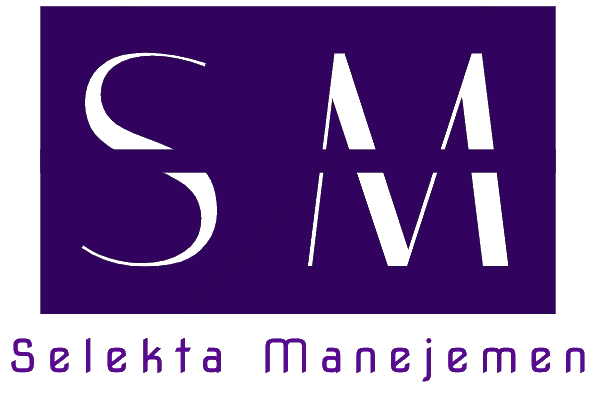Isi Artikel Utama
Abstrak
ASEAN merealisasikan the ASEAN Economic Community (AEC) pada akhir tahun 2015. MEA merupakan integrasi ekonomi yang tujuannya adalah bebasnya pergerakan barang, jasa, investasi, dan pekerja terampil, serta pergerakan modal yang lebih bebas dan hal ini tentunya memiliki dampak langsung terhadap nilai tukar. Berdasarkan hal tersebut, tujuan penelitian ini adalah untuk melihat performance dan kemiripan karakteristik nilai tukar Indonesia diantara negara-negara anggota ASEAN lainnya pada periode sebelum dan sesudah implementasi ASEAN Economic Community (AEC).Performance nilai tukar tersebut dibedakan menjadi low-performance dan high-performance yang diklasifikasikan berdasarkan rata-rata perubahan fluktuasi nilai tukar mata uang masing-masing negara yang dipengaruhi oleh perubahan beberapa variabel ekonomi makro. Data yang digunakan dalam analisis adalah variabel-variabel perubahan exchange rate, inflation rate, interest rate, income level, surplus/deficit balance of trade, dan premium/discount forward rate dengan waktu bulanan pada periode tahun 2013 hingga 2017. Teknik analisis data serta penyajian pembahasan hasil dalam penelitian ini menggunakan pendekatan analisis deskriptif berdasarkan diskriminan dan klaster guna membandingkan kinerja dari keseluruhan variabel sebelum dan sesudah implementasi ASEAN Economic Community (AEC).
Kata Kunci
Rincian Artikel
Hak Cipta (c) 2022 Nur Rahmah Tri Utami

Artikel ini berlisensiCreative Commons Attribution-ShareAlike 4.0 International License.
Referensi
- Afzal, M. dan B. Hamid (2013), Factors Influencing Real Exchange Rate: International Evidence, International Journal of Finance, 25 (4), pp. 7946-7965.
- Anderson, D.R., D.J. Sweeney, dan T.A. Williams (2011), Statistics for Business and Economics, 11th, South-Western Cengage Learning, Nelson Education, Ltd., Canada.
- Asean.org (2017), http://asean.org/asean/about-asean/, diakses tanggal 2 Agustus 2017.
- Bailliu, J., L. Lafrance dan J.F. Perrault (2003) Does Exchange Rate Policy Matter for Growth?, International Finance Journal, 6 (3), pp. 381-414.
- Chang, R. dan A. Velasco (2000), Exchange-Policy for Developing Countries, American Economic Review, 90 (2), pp. 71-75.
- Chia, S.Y. (2014), Chapter 10: The ASEAN Economic Community: progress, challenges, and prospects, Econiomics 2014-Elgaronline, pp. 269-315
- De Vita, G dan K.S. Kyaw (2011) Does Choice of Exchange Rate Regime Affect The Economic Growth of Developing Countries? The Journal of Developing Areas, 45 (Fall), pp. 135-153.
- Ha, J., M.M. Stocker, dan H. Yilmazkuday (2020), Inflation and Exchange Rate Pass-Through, Journal of International Money and Finance, Elsevier, 105, p. 102187.
- Investasean.asean.org (2017), http://investasean.asean.org/index.php/page/view/asean-economic-community, diakses tanggal 2 Agustus 2017.
- Ishikawa, K. (2021), The ASEAN Economic Community and ASEAN Economic Integration, Journal of Contemporary East Asia Studies, 10 (1), pp. 24-41.
- Madura, J. (2015), International Financial Management, 12th Edition, Cengage Learning, Stamford, USA.
- Masron, Tajul A. (2017), Relative Institutional Quality and FDI Inflows in ASEAN Countries, Journal of Economic Studies, 44 (1), pp. 115-137.
- Winantyo, R., S. Arifin, R.A. Djaafara, dan A.S. Budiman (2008), Masyarakat Ekonomi Asean (MEA) 2015: Memperkuat Sinergi ASEAN di Tengah Kompetisi Global-Bank Indonesia, PT Elex Media Komputindo, Jakarta.
Referensi
Afzal, M. dan B. Hamid (2013), Factors Influencing Real Exchange Rate: International Evidence, International Journal of Finance, 25 (4), pp. 7946-7965.
Anderson, D.R., D.J. Sweeney, dan T.A. Williams (2011), Statistics for Business and Economics, 11th, South-Western Cengage Learning, Nelson Education, Ltd., Canada.
Asean.org (2017), http://asean.org/asean/about-asean/, diakses tanggal 2 Agustus 2017.
Bailliu, J., L. Lafrance dan J.F. Perrault (2003) Does Exchange Rate Policy Matter for Growth?, International Finance Journal, 6 (3), pp. 381-414.
Chang, R. dan A. Velasco (2000), Exchange-Policy for Developing Countries, American Economic Review, 90 (2), pp. 71-75.
Chia, S.Y. (2014), Chapter 10: The ASEAN Economic Community: progress, challenges, and prospects, Econiomics 2014-Elgaronline, pp. 269-315
De Vita, G dan K.S. Kyaw (2011) Does Choice of Exchange Rate Regime Affect The Economic Growth of Developing Countries? The Journal of Developing Areas, 45 (Fall), pp. 135-153.
Ha, J., M.M. Stocker, dan H. Yilmazkuday (2020), Inflation and Exchange Rate Pass-Through, Journal of International Money and Finance, Elsevier, 105, p. 102187.
Investasean.asean.org (2017), http://investasean.asean.org/index.php/page/view/asean-economic-community, diakses tanggal 2 Agustus 2017.
Ishikawa, K. (2021), The ASEAN Economic Community and ASEAN Economic Integration, Journal of Contemporary East Asia Studies, 10 (1), pp. 24-41.
Madura, J. (2015), International Financial Management, 12th Edition, Cengage Learning, Stamford, USA.
Masron, Tajul A. (2017), Relative Institutional Quality and FDI Inflows in ASEAN Countries, Journal of Economic Studies, 44 (1), pp. 115-137.
Winantyo, R., S. Arifin, R.A. Djaafara, dan A.S. Budiman (2008), Masyarakat Ekonomi Asean (MEA) 2015: Memperkuat Sinergi ASEAN di Tengah Kompetisi Global-Bank Indonesia, PT Elex Media Komputindo, Jakarta.

